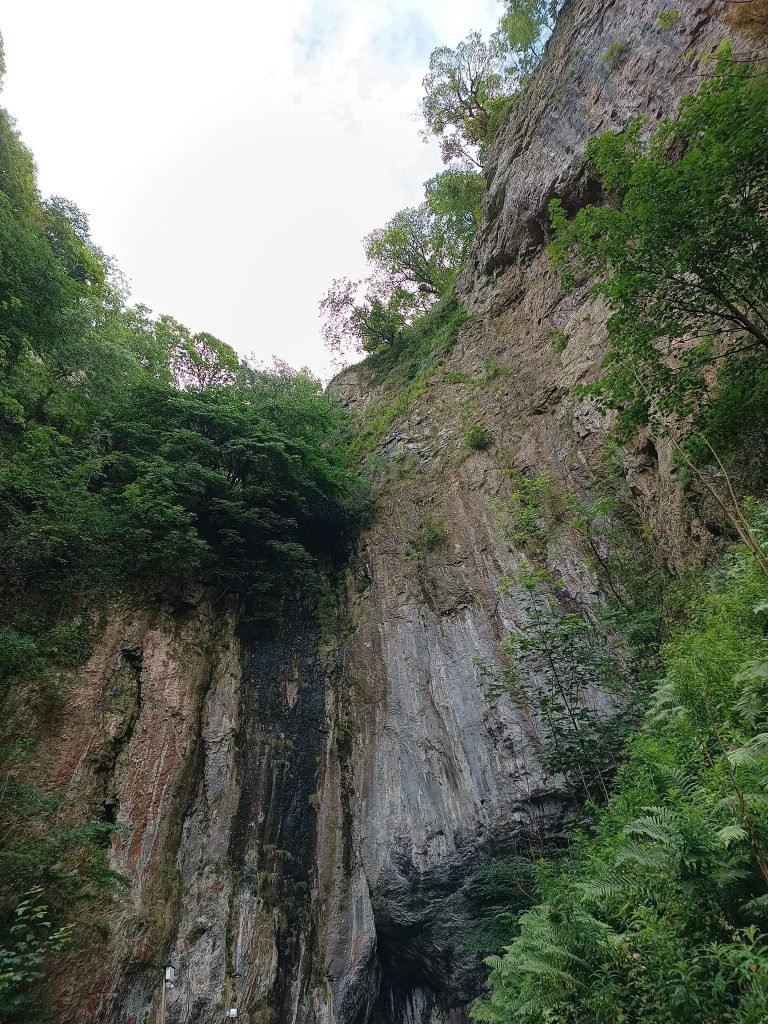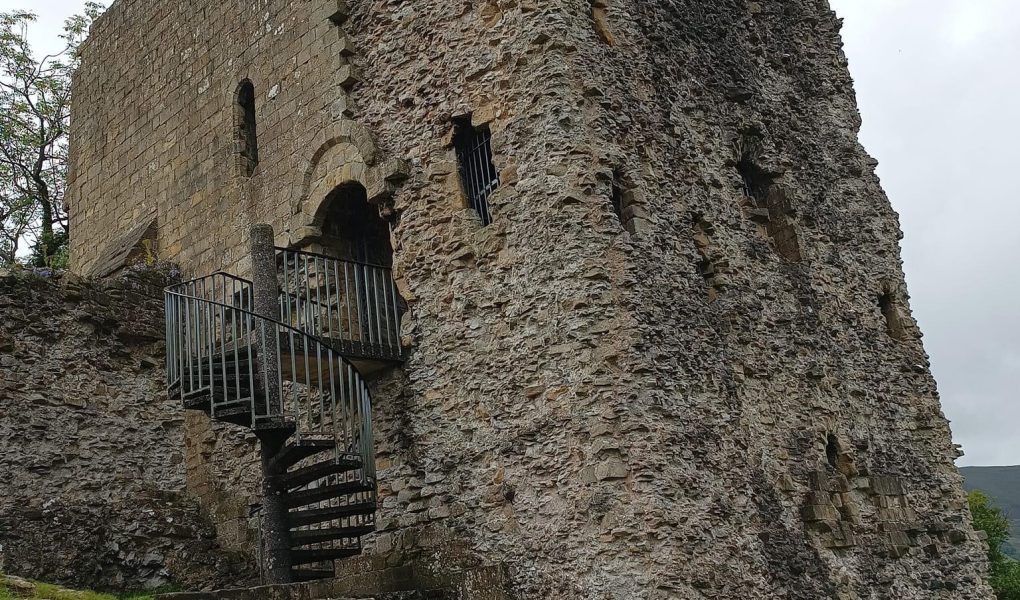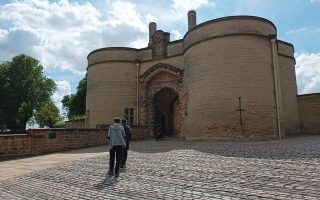Castleton is a lovely little village situated in the High Peak. The Dark Peak is to the north and the White Peak to the south. It has something completely unique as its claim to fame. It is the only place in the world where the semiprecious stone, Blue John, can be found. It’s pretty much mined out. It is a very rare form of fluorite with unusual colours. A small amount of mining continues, and if you climb the hills around the caves, you can sometimes find bits of inferior stone, which is exciting and all the more precious for finding it yourself.
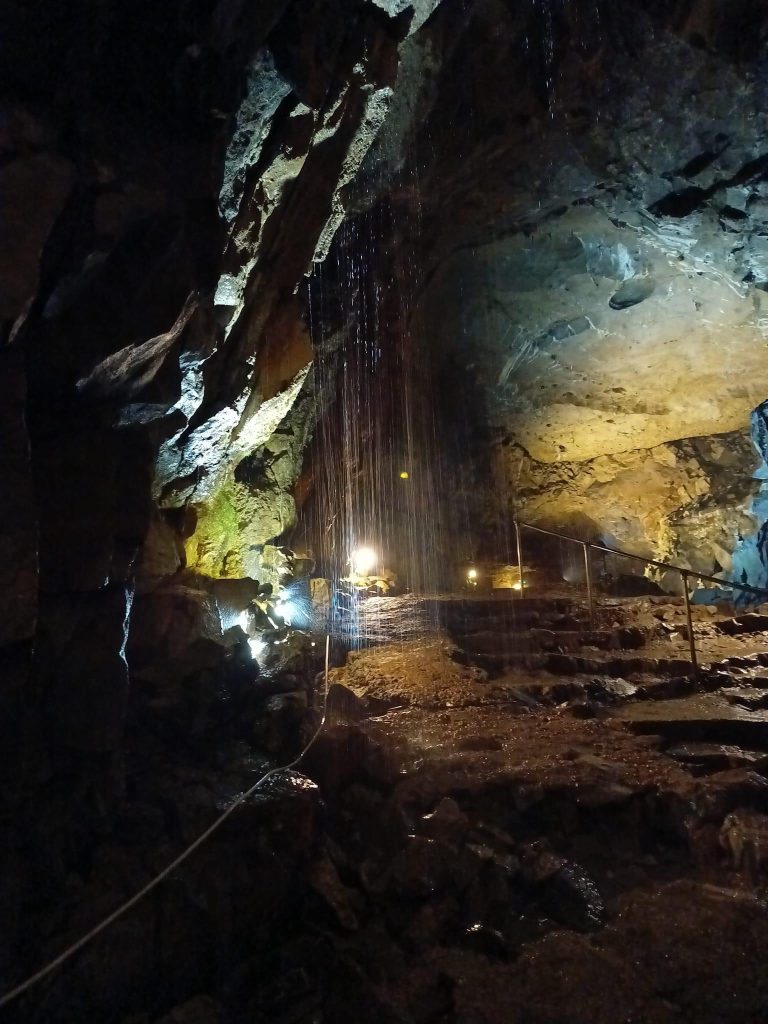
Castleton is old. It was mentioned in the Domesday book, although it was inhabited long before that, as evidenced by archaeological finds. It was named for the castle (unsurprisingly) of William Peveril. Not much of the early village survives. Even the Norman church has been extensively restored during the Victorian era and they aren’t famous for sympathetic restoration.
Things to know about visiting Castleton. There’s one main car park. It’s a decent size and has public toilets. The car park isn’t free, and we discovered that the toilets close relatively early. There are plenty of little tea rooms, but they also close early, even during summer holidays. Castleton is very popular with potholers, and has two main attractions (more later), all of them use the solitary car park, so it gets very busy and there is very limited parking in the village.
Castleton’s Peak Cavern
Peak Cavern is one of the main attractions in Castleton. It’s also known as the Devil’s Arse (I kid you not) or in mediaeval times, Peak’s Arse. If you are lucky, you may hear it fart (apparently they can hear it in the village). It has the largest natural cave entrance in the British Isles as well as being the largest natural cave system in the Peak District. There are another three show caves outside the village. These were created by the mining industry. As well as the tours, it’s also a venue for concerts.
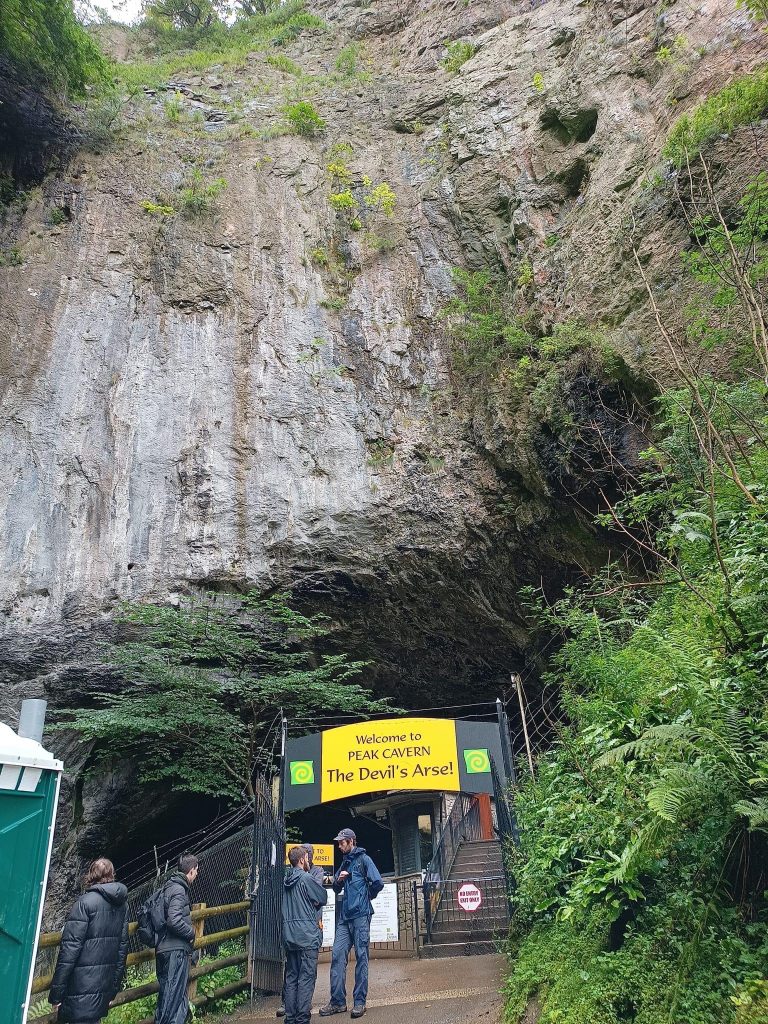
The tours of the cave system starts with a (much too long) talk about the rope making industry. The rope makers used to live in the caves and were known as troglodytes. As if the talk wasn’t enough, there’s also a demonstration of how rope was made. It’s an important part of the history of the cavern, I understand why it gets a mention, but they really could cut this part down. We went to visit a cave, not learn about the rope making industry.
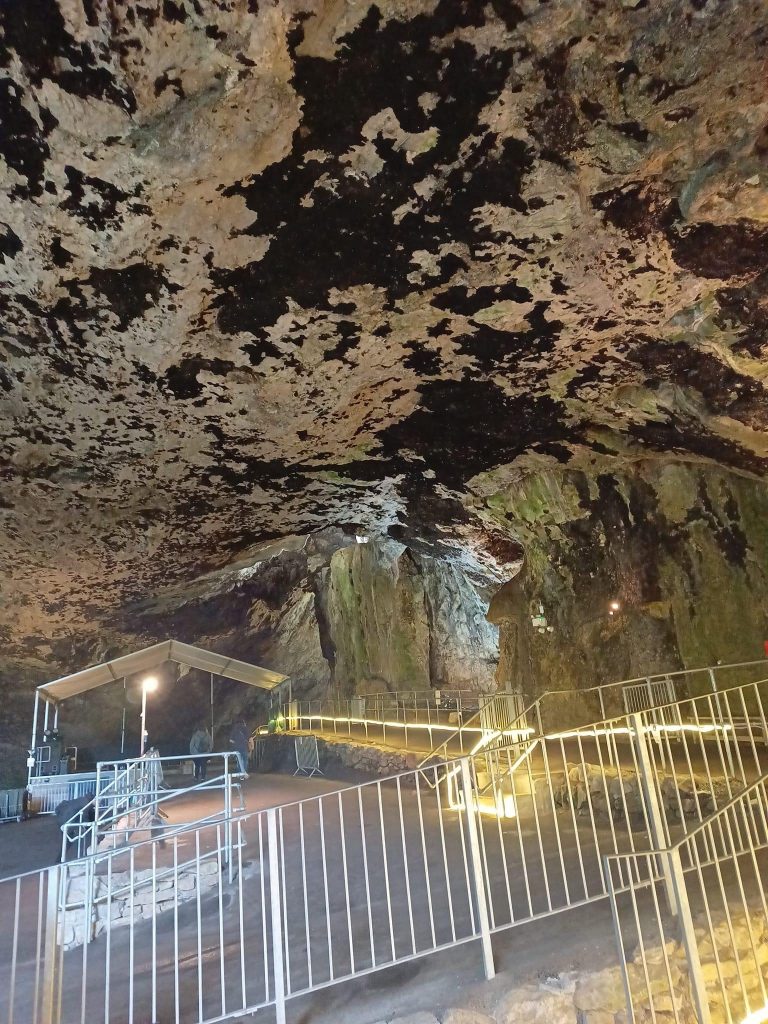
Be warned, this is a relatively demanding tour in one part. The roof of the cave is very low in one section, and this isn’t a quick bob under and up. You have quite a lot of steps to do bending over, so if you have mobility issues, this isn’t the attraction for you. It’s sometimes referred to as lumbago walk. It’s also worth remembering that, as with other caves, the temperature inside is constant, whatever the weather outside. It’s cool, so you will need a coat even in the middle of summer. They are dog friendly, so if you are nervous around dogs, you may want to give it a pass. If you’re taking your dog, consider popping it in a coat too. It’s a lot of talking and not much of the cave system is covered. As with other caves in the area, if you want impressive stalagmites or stalactites, you’ll be disappointed. However there’s a lovely florescent part and a little waterfall. There are no toilets, nor refreshment facilities.
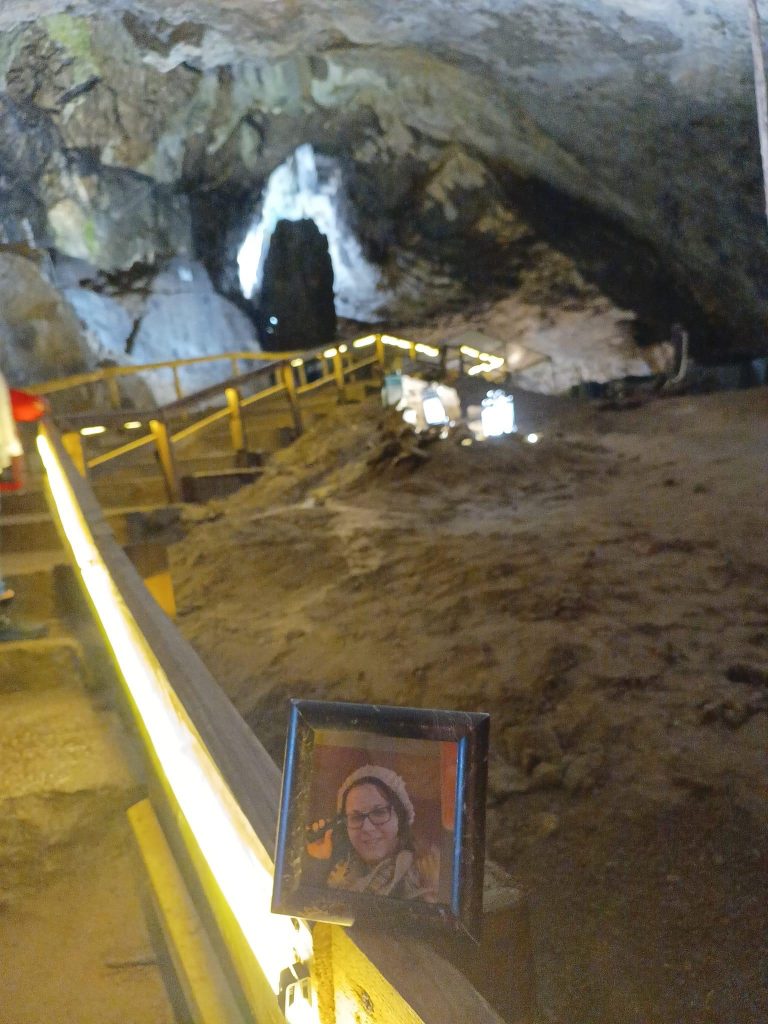
Peveril Castle at Castleton
So, you’ve decided that you can’t cope with the bending and decided to visit the other main attraction in Castleton, Peveril Castle. If you couldn’t cope with bending, think again. The walk (climb) to castle is steep, very steep. They actually have benches at various stages on the way up so that you can have a breather (pretend you’re taking in the view). But boy, the views are worth it when you get to the top.
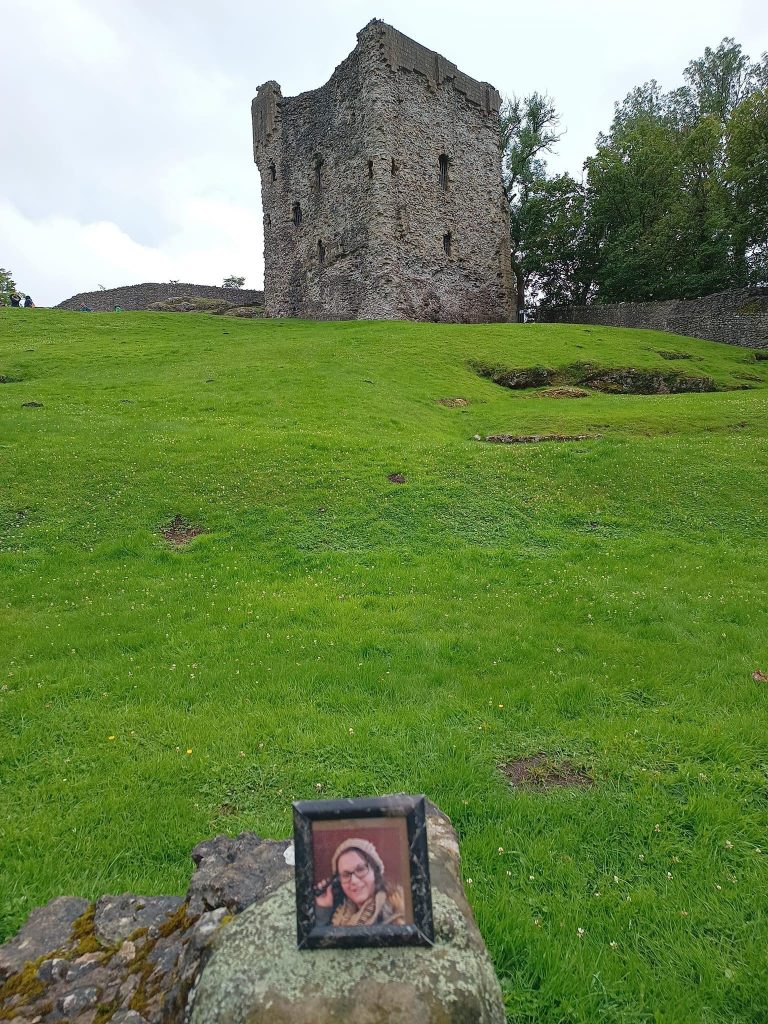
The castle is one of the earliest Norman fortresses. It was originally known as Peak Castle or Castle of the Peak’s Arse (see the name of the cavern earlier). It was built by William Peveril around 1080. He was believed to be the illegitimate son of William the Conqueror. It was originally a wooden fortress which was soon converted to stone. William’s son forfeited the castle to Henry II, who built the keep, the only part still standing, with the original buildings only being visible as outlines of low stone walls. It may look like an imposing fortress ideally suited to resist an army (I really wouldn’t want to storm up that hill in armour and carrying weapons), but it was mostly used as a hunting lodge and only saw one engagement. Ridiculous as it sounds, king John’s chosen custodian had to besiege his own castle to take over occupancy.
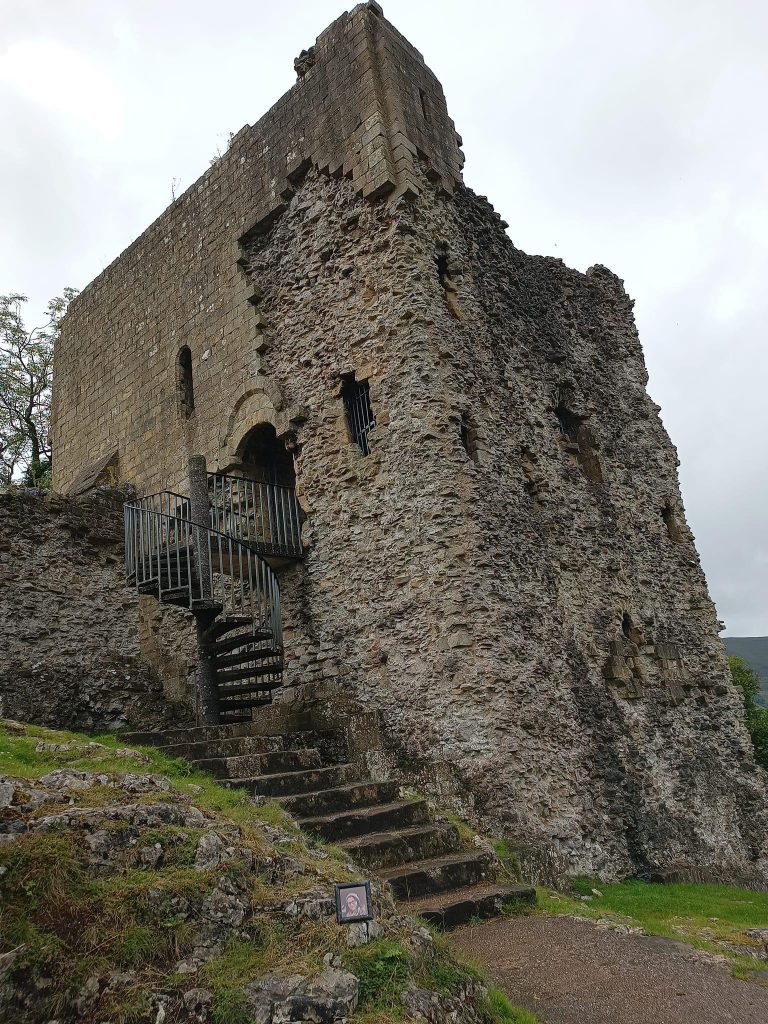
The castle passed through several royal hands until the 15th century. That’s when it fell into disrepair. It was only spared demolition because Queen Elizabeth had nowhere else in the area to house prisoners. Oddly, Castleton sprung up about 100 years after the castle was built, but it’s the popularity of walking in the area and visitors to the village that have turned the castle that once birthed the village into a tourist attraction itself.
The castle is now in the care of English Heritage. So free to visit if you are a member. There is no car park, you’d have to use the car park in Castleton. There’s a small museum above the shop, which sells a few snacks, drinks and souvenirs. They have a toilet. Then brace yourself for a very steep climb up. I’m proud to say that I can still do it all in one go without stopping. Because of the commanding position, if you do need a breather, you can enjoy the views. The surrounding area is very beautiful. As mentioned, there isn’t much left other than the shell of the keep, but it’s a testament to the builders that nearly five hundred years after the castle stopped being used, it’s still standing.
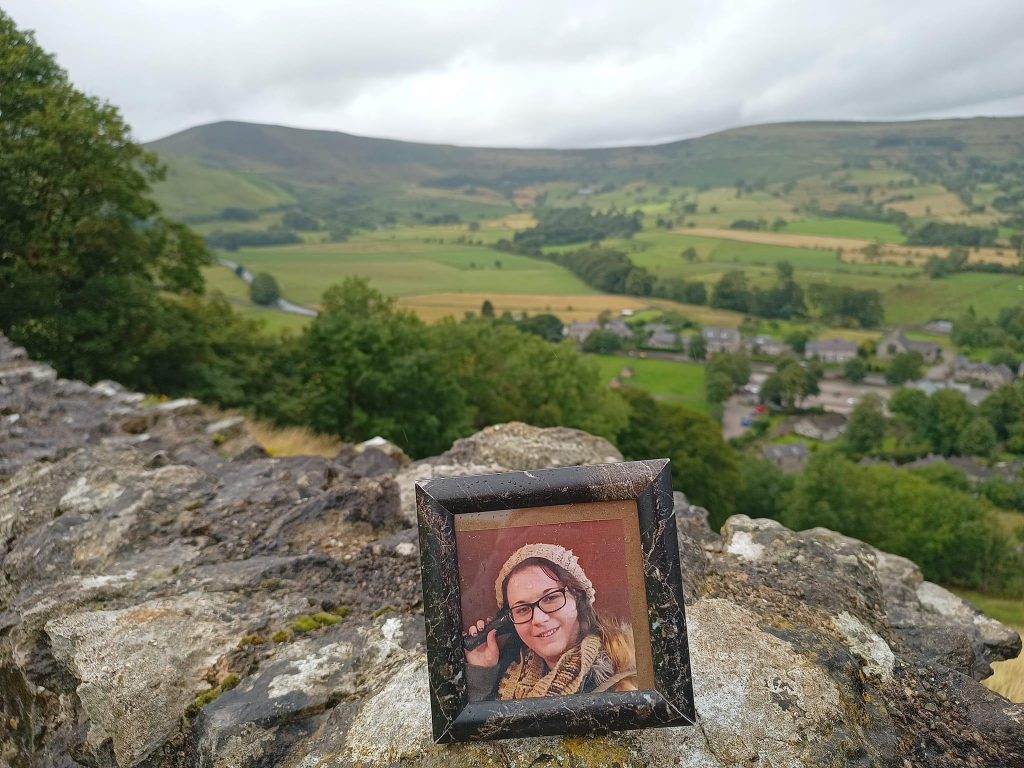
The surrounding area and magnificent views are well explained on signs on the castle walls. It’s a great site to let children run off steam. Just keep an eye on them if they’re the type to climb walls. There are long drops. Hand them a toy sword and they’d be in their element.
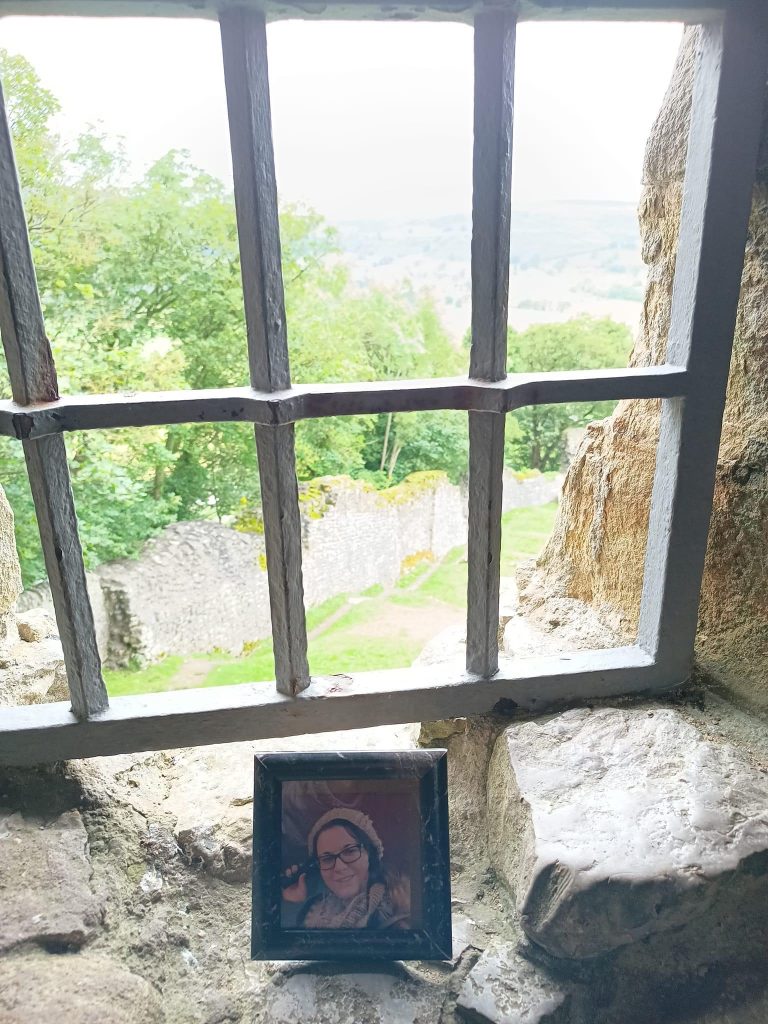
The walk back is the same steep path, so watch your footing if it’s damp or icy. The castle is popular and the path can get crowded. But if you had your head down, determined to power your way to the top, you get another chance to enjoy the views on the way down.
As a place to visit for a day, there’s plenty to do. If you stay for a few days (and have the money), visit the other caves in the area. But there is plenty of walking in the surrounding area if you’re on a budget. It can get very busy, so if you prefer a quiet break, aim for term time and through the week. It’s definitely worth a visit.
